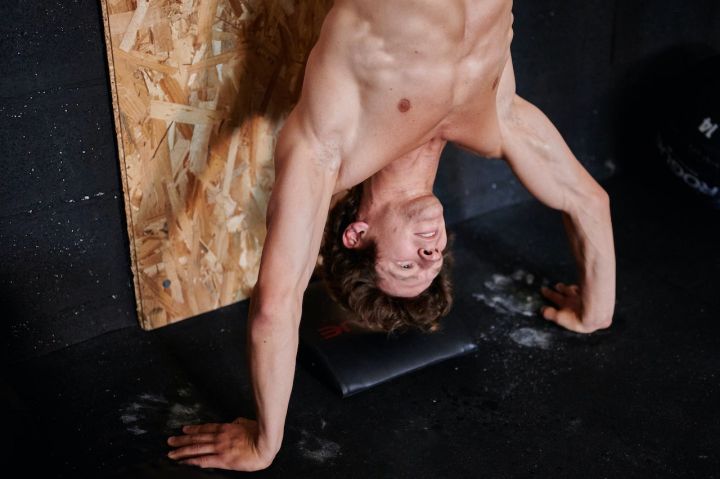The deltoid muscle is located in the back of the upper body and is a small muscle group, but don't underestimate this small muscle group, it is the one that determines the appearance of the upper body. It not only determines the shape of the arms, but also plays an important role in the appearance of the collarbone, so to speak. The deltoid muscle is directly responsible for the proportionality of the upper body, so it should be given the same attention and frequency of exercise as any other muscle group, regardless of its size.

The deltoid muscle not only has an impact on the external form of the body, it is also involved in many movements of the upper body, so if the deltoid is well developed it will improve the quality of the other parts of the upper body, and if it is weak, it will be affected in other movements as well. The deltoid is part of the whole body and should not be neglected if the body is to develop in a more coordinated and balanced way.

The anterior bundle of the deltoid muscle is relatively the most developed part of the deltoid muscle, as it is exercised in many exercises and is therefore the most developed of the group. The middle bundle of the deltoid is directly responsible for the thickness of the shoulders, so it is important to focus on it during training. The posterior bundle of the deltoid is relatively little used and is therefore relatively weak and should also be given attention.

In the actual training, it is important to arrange the exercises according to the development of each part of the deltoid muscle and the results you want to obtain, so that no part of the body can be exercised in a one-sided way, but in a holistic way, so that the stimulation is comprehensive. The movements we are going to share are based on the different parts of the deltoid muscle and can be performed with barbells or with dumbbells instead.
Movement 1: Standing barbell push-ups

This exercise not only works the anterior deltoids, but also the obliques and several other muscle groups. Keep your feet apart, your back straight, your abdominals tight and your hands open wider than shoulder width apart, holding the barbell in front of your chest. Push the barbell upwards, lift it above your head, let your arms straighten, pause, then slowly lower the barbell back down to its original position.
Movement 2: Seated dumbbell push-up

The seated dumbbell push-up works both the anterior and middle deltoids, sit on a seat, press your back against the back of the chair while keeping your back straight and hold the dumbbells with your palms outward, keeping your large arms in a straight line and your small arms perpendicular to the floor. Raise both arms up and overhead at the same time, keeping the arms straight but not touching the two dumbbells, and then slowly lower the dumbbells into a controlled position. Keep your legs on the floor on either side of the seat to keep your body stable during the movement.
Movement 3: Standing dumbbell shrug

This exercise is designed to stimulate the oblique muscles. Maintain a standing position with your head up and chest out, tighten your abdominals and hold a dumbbell in each hand at your side with your arms straight. Lift your shoulders upwards as far as you can and drive the dumbbell upwards, stopping at the apex and then slowly letting the dumbbell drop back down to its original position. The movement is carried out with the shoulders moving up and down, not the arms.
Movement 4: Prone dumbbell flying bird

This exercise is designed to stimulate the posterior deltoid muscle, with the upper body lying close to parallel to the floor, arms hanging naturally and holding the dumbbells. Raise the dumbbells until the arms are in a straight line, then lower the dumbbells slowly back to the starting position. Keep your legs back on the pedals to keep them stable.
Perform 15-18 reps of each of these movements for 4-5 sets, with a relaxing stretch afterwards. Rest during the movement. Choose the weight of dumbbells or barbells according to your own ability and choose the strength you can handle to avoid physical injury. If you also want wider shoulders, train this set to stimulate the deltoid muscles in a comprehensive way, thus making your shoulders fuller.

